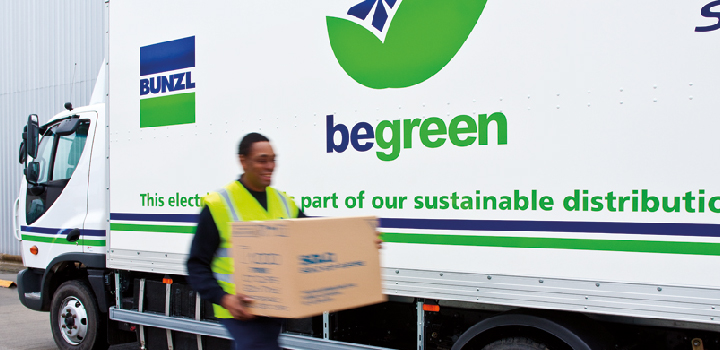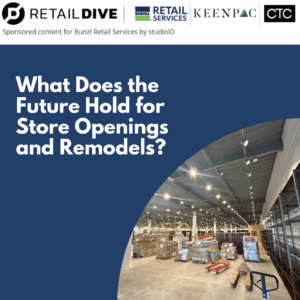Is There a Silver Lining?
The unexpected outbreak of COVID-19 in 2020 sent retail operations into panic and caused disruptions all along the supply chain. As demand in some categories skyrocketed, others disappeared.
Serious disruptions affected 57% of retailers, with 72% of those reporting a negative effect, according to Ernst & Young 2020 survey of 200 senior-level supply chain executives.
However, many of the issues that arose existed prior to the pandemic, they were just amplified by the novel situation. The pandemic illuminated many issues in the retail supply chain and created a need for a more immediate solution.
If a company was getting by with insufficient operations before the pandemic, they found themselves in a crisis when it hit. Retailers and their supply chains were forced to adapt and innovate like never before.
How has the retail supply chain shifted after the pandemic?
Increased Demand
As factories shut down or slowed production due to lockdown and sick workers, shipping companies cut their schedules in anticipation of a decline in demand for moving goods around the world.
However, this drop didn’t come in all industries. While areas such as travel, spa, and professional clothing dropped, consumers used that money to spend on home renovations, décor, leisurewear, kitchen tools, landscaping, and more.
Even as manufacturers tried to produce more, the backlog of shipping meant goods piled up with no place to go.
Two years later as consumer demand continues to rebound, many are still struggling to keep up.
Labor Shortages
The labor shortage has only gotten worse at factories and logistics operations around the globe. According to U.S Bureau of Labor Statistics, as of February 2022, the United States had more than twice as many manufacturing jobs open as it did before the pandemic.
These labor shortages inevitably lead to delays at every point along the way.
Ports of entry are understaffed without enough dockworkers and longshoremen to accept shipments. Next, truck drivers are in short supply for carriers, slowing the process of moving inventory to distribution centers. With many warehouses and distribution centers unable to operate at full capacity, this further adds to wait times.
While HR frantically tried to hire, supply chain teams were left having to adapt and make do with what they had. This pressure forced innovation and drove efficiency across the board. Leadership had to ask questions such as: What could be cut? What could be moved? What could be automated?
Cohesive Multichannel Operations
The pandemic put the term “multichannel” to the test. Many companies struggled to unify data communications across multiple retail channels.
Challenges came when retailers tried to link services such as loyalty and rewards, which gave consumers a less than seamless experience and put emphasis on the importance of cohesion between all retail channels.
The Need for Increased Data Connectivity
One common theme we saw among organizations that were able to remain successful throughout the pandemic was the use of modern digital tools.
The success of an organization’s planning was strongly linked to its use of modern digital tools, especially advanced analytics. More than 50% of respondents in a 2021 McKinsey survey said they have implemented additional analytics approaches during the past 12 months to address the problem.
What the Future Holds for the Retail Supply Chain
Greater Supply Chain Visibility
Supply Chain Visibility (SCV) tracks the goods and products in transit from the manufacturer to the final destination and allows shippers to improve customer service and better control costs.
A McKinsey study noted that only 2% of companies have visibility into their supply base beyond the second tier. This is a huge problem because this information is crucial in helping logistic and operational teams to stay in front of delayed shipments and other issues so they can make more informed decisions, set realistic expectations and work with fewer disruptions.
If a retailer can’t implement operational visibility, it’s important to work with a partner who can provide this level of transparency and information.
More Digital and Autonomous Operations
“The race is on for digital enablement and automation: 52% of executives say that the autonomous supply chain (e.g., robots in warehouses and stores, driverless forklifts and trucks, delivery drones and fully automated planning) is either here or will be by 2025, the EY survey notes.
Paperless essential documents are becoming the norm, including everything from the bill of lading (BOL) to inspection paperwork. With digitized paperwork, shippers have more organized records and a precise view of documents that were signed. A Transportation Management System (TMS) makes this process easier, with real-time insights available in one hub.
The Silver Lining: What’s Here to Stay?
Although the pandemic brought many challenges and took the supply chain into disarray in some cases, it also forced innovation and increased operational efficiency. Here are some other silver linings from the pandemic that we think are here to stay in the retail world.
More Value in Collaboration and Partnership
During the pandemic trusted, reliable vendors became priceless. This type of dependable relationship usually includes more transparency and being open to sharing data.
Businesses knew that the more they could honestly share with partners the more they could benefit. Planning and strategizing became a shared process, and more efficient as an outcome.
Reuters’ Where’s My Stuff? Report shares that, “Organizations will need to move closer to their suppliers and build relationships and trust, but they can also use smart approaches to data sharing to make progress.”
Collaboration within an organization and its vendors and partners is key. Procurement needs to be working closely with sales forecasting and so on. Ideally, no one and no department should be working in a silo.
Resourceful Problem Solving
“Necessity is the mother of invention,” as the proverb goes. When supplies became out of stock, some companies decided to make their own. When ocean carriers weren’t available, vessels were chartered. Sharp business leaders found ways to work around delays and dead ends and find creative solutions.
“Nimble shippers and manufacturers know they have to keep adjusting. They are using alternative ports, reformulating products, shifting to air freight, boosting in-house trucking, taking advantage of off-peak port hours, and diverting resources from low-margin products to moneymakers,” shares World Economic Forum.
Online Shopping Increase
According to IBM, in late 2020, 23% of consumers reported that they were doing all or most of their shopping online and that this was a change from their pre-COVID shopping patterns.
“As online demand continues to rise it can be difficult to estimate in-store demand and inventory. In addition, in-store cart conversion is now impacted by online inventory availability,” the article continued.
Customers are now checking in-store availability online before they make a trip in-store. Further, 33% say they are less likely to visit a store if they can’t first confirm that the item they want to purchase is in stock.
Re-skilling and Up-skilling Current Employees
Savvy employers are making the most of the team they have. They are investing in their employees and offering to reskill and upskill to fight the labor shortage and shifting landscape we are currently facing.
In 2017, the McKinsey Global Institute estimated that as many as 375 million workers—or 14% of the global workforce—would have to switch occupations or acquire new skills by 2030 because of automation and artificial intelligence.
The pandemic has made the situation more urgent as leadership contemplates how to adapt to changing conditions and needs.
Companies need to prioritize their learning budgets and commit to reskilling and upskilling employees, which will only strengthen the business for future disruptions.
Improved Employee Work Conditions
Employers in almost every sector are struggling to retain and hire employees. Tenured employees have the upper hand and companies are working to keep them happy.
The workforce has found its voice and is demanding more work-life balance and higher wages. Full benefits for maternity and paternity leave and more emphasis on mental health and wellness will continue to grow in the years to come. Perks such as sign-on bonuses, tuition reimbursement, flexible scheduling, and remote work options are also becoming more commonplace. In order to recruit and retain talent, organizations will need to review and enhance their offerings to stay competitive.
Embracing Innovation
These new resourceful solutions also required operation and compliance teams to be flexible and open to change.
The challenges that the pandemic brought to the retail supply chain, and just about every other industry, also created more receptiveness to change. Stringent processes suddenly became bendable, guidebooks tossed aside, and new rules were formed.
Businesses that can adapt quickly and create more dynamic supply chains will be the ones that remain successful. Agility is everything in the retail world currently.
How has the pandemic changed your retail operations? Share the article on social and let us know.
Written July 7, 2022 by Bunzl Retail Services staff writers..





